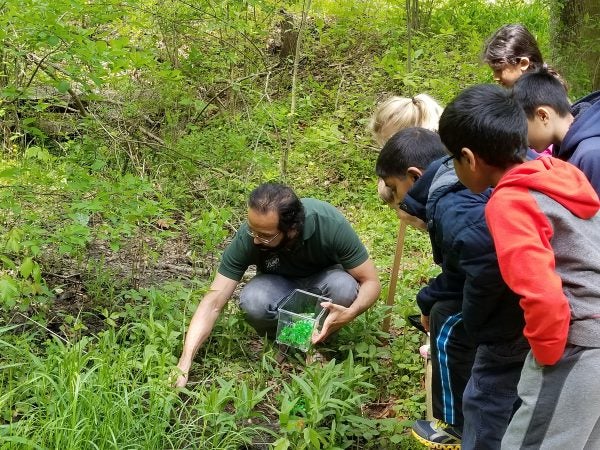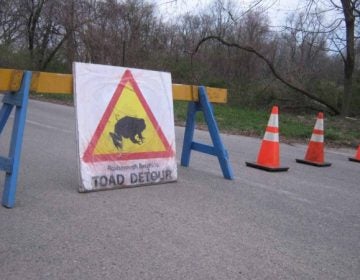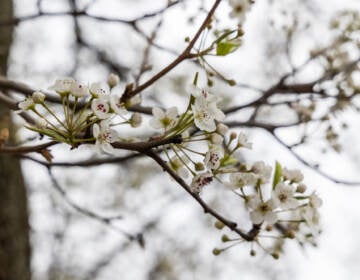Early spring peepers might be trouble for rest of food chain
Recent unseasonably warm weather has lured some frogs out of hibernation early. Herpetologists worry what that might mean for them — and other animals.
Listen 2:14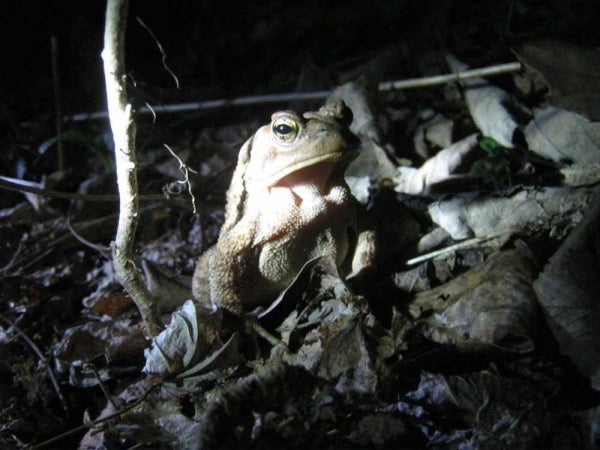
Hibernating toads are making their annual leap to breeding grounds — a bit ahead of schedule (WHYY, file)
Winter-weary folks longing for spring might seek signs in everything from bird songs to early blooming flowers to migrating ducks bobbing through the clouds on warming winds.
For Matthew McCort, it’s spring peepers.
The tiny, nocturnal frogs typically start singing in late February.
“When you’re starting to hear frogs call, you’re generally hearing the very beginnings of spring,” said McCort with Herpetological Associates in Pemberton, New Jersey.
But this year?
“Definitely not normal,” said Carlos Martínez Rivera, an amphibian conservation biologist at the Philadelphia Zoo. “We actually had spring peepers calling in early January, when it was like 60 degrees.”

Mother Nature has been full of surprises this winter. From wildly pingponging temperatures to flip-flop-inducing warmth, February “has been unusual, there’s no doubt about it,” said Walter Drag, a meteorologist with the National Weather Service in Mount Holly, New Jersey. This was the third-warmest February in the Philadelphia region in 140 years of record keeping, with Wednesday’s balmy high of 77 degrees shattering the previous record for that date, set in 1930, by 5 degrees, Drag said.
That can be confusing for a frog, which knows only that rising temperatures mean mating season is here. So the recent unseasonably warm weather has lured many males out of hibernation earlier than normal to look for love.
But as in all things, nothing is without consequence.
Frogs’ early emergence from hibernation has scientists speculating about what the future holds for the amphibians — and other animals.
“This has been honestly one of the craziest winters, or spring, so far, and nobody knows what will happen now,” said Martínez Rivera, who’s now in Ecuador on a conservation tour with students.
“If the frogs come out before the insects do, then they’ll have no food. The worst-case scenario is the males start calling way too early in the season, and the females are not still ready to lay their eggs,” he said. “And when the females are ready to lay their eggs later in the season, the males might be tired or spent in terms of energy. That might affect reproductive success.”
Climate change reordering spring’s parade
Because amphibians “are on everyone’s dinner menu,” McCort said, any dip in their reproduction could affect the rest of the food chain, with predators coming up empty when foraging for food.
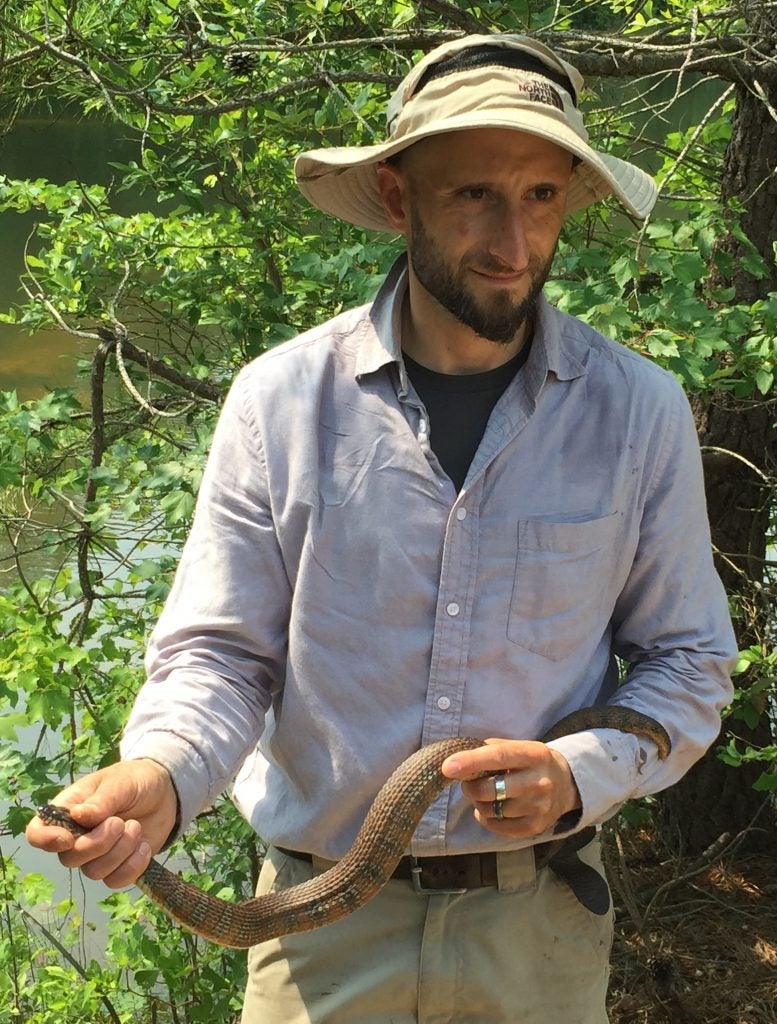
In Roxborough, naturalists and volunteers at the Schuylkill Center have helped 12,000 American toads since 2008 safely migrate across busy Port Royal Road on their way to and from their breeding grounds in the Upper Roxborough Reservoir Preserve. The toads typically are most active in late March and early April. So the center has a permit to close the road beginning March 1 and scheduled its upcoming Toad Nights for April 6 and 7.

But toads have already taken to the road, said Mike Weilbacher, the center’s executive director.
“This is one of the earliest times we’ve seen toads crossing Port Royal Avenue,” Weilbacher said, a fact he finds “deeply concerning.”
“Spring is supposed to be this elegantly orchestrated parade: This happens, then this happens, then this happens, then this happens,” Weilbacher said. “So what’s happening with climate change is, the parade is getting reordered, and no one knows when to march.”
Mother Nature is restoring order now, with temperatures expected — at least through this week — to be back to seasonal averages, Drag said.
But what does that mean for the spring peepers, chorus frogs, American toads and wood frogs that already have hopped out of their hibernation homes of mud, leaf litter and hollowed-out trees?
“Some creatures have better flexibility built into their DNA than others,” Weilbacher said. “But it’s unclear how many punches some of these organisms can survive.”
Martínez Rivera expects to find some answers when he and citizen volunteers survey the frog scene in a few weeks at the John Heinz National Wildlife Refuge at Tinicum as part of FrogWatch USA. The program starts in mid-March and lasts about 10 weeks, Martínez Rivera said.
Frogs expected to tough it out
“We’ll listen to who’s calling and how abundant they are in any particular area,” he said. “We’ll see if there’s a big shift — but it will take a few years to scientifically prove any trends in how the frogs are developing.”
McCort suspects the frogs will be just fine.
After all, he pointed out, frogs’ breeding season lasts through the middle of June, with different species emerging in early, mid- and late spring to mate. Female frogs typically lay hundreds to thousands of eggs, depending on species.
Wood frogs are one of the earliest frog species to emerge from hibernation.
“They have a type of, let’s say in layman’s terms, an antifreeze in their system that prevents them from freezing, so they are incredibly cold-tolerant, and they’re able to breed when it’s still very cold out,” McCort said. “Whether every frog is successful breeding is almost unimportant, because we will invariably, within the next month or so, have the appropriate weather for those species, and it will still be within their breeding window.”
So when he hears the peeps and croaks of frogs outside, no matter how early, he doesn’t despair.
“It puts a massive smile on my face,” he said. “As a herpetologist and a bird guy, the spring for me is the greatest time of year.”
WHYY is your source for fact-based, in-depth journalism and information. As a nonprofit organization, we rely on financial support from readers like you. Please give today.



